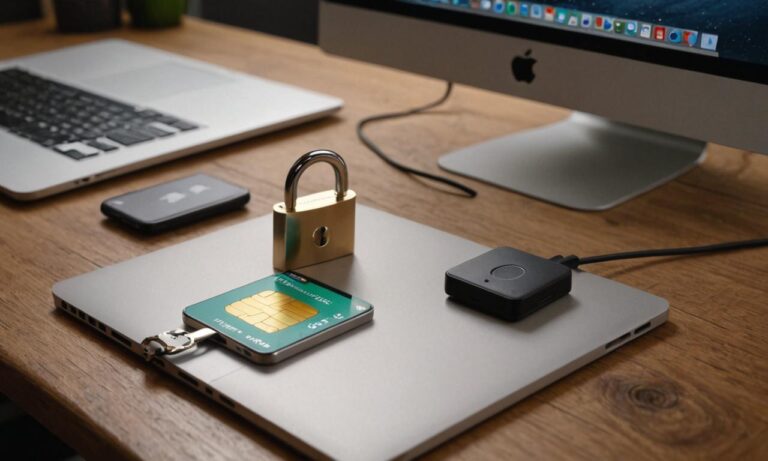In this article, I will discuss the growing problem of Apple Pay scams and provide valuable insights on how to identify and protect yourself from fraudulent transactions. As a popular and trusted payment method, it’s crucial to stay informed about potential risks and take proactive measures to safeguard your hard-earned money.
From my personal experience, I once fell victim to an Apple Pay scam where a fraudulent merchant charged my account for a purchase I never made. It was a stressful and frustrating experience, but through proper reporting and following up with Apple Support and my bank, I was able to resolve the issue and receive a refund. This incident taught me the importance of regularly monitoring my transactions and being vigilant against potential scams.
Common Types of Apple Pay Scams to Watch Out For
One of the most prevalent Apple Pay scams involves fake customer support. Scammers may contact you, claiming to be from Apple, and attempt to trick you into revealing sensitive information or granting them access to your account. Be cautious of unsolicited calls or messages requesting personal details or asking you to click on suspicious links.
Another scam to watch out for is the Apple ID loan scam. Fraudsters may offer loans or financing services, requiring you to provide your Apple ID and password. Remember, Apple does not provide such services, and you should never share your login credentials with anyone.
Phishing messages and deceptive emails are also common tactics used by scammers. These messages often appear legitimate, bearing Apple’s logo and branding, but are designed to steal your personal information. Always verify the sender’s email address and avoid clicking on links or downloading attachments from suspicious sources.
How to Spot and Identify Apple Pay Scams
To protect yourself from Apple Pay scams, it’s essential to learn how to recognize phishing messages. Legitimate Apple emails will always come from an @apple.com address. Be wary of messages with urgent requests, poor grammar, or generic greetings. If in doubt, contact Apple Support directly through official channels.
Scammers often create convincing text scams that appear to be from Apple. These messages may claim that your account has been locked or that there is an issue with your payment. Remember, Apple will never ask for your password, credit card details, or other sensitive information via text message.
Fraudsters may exploit the popularity and trustworthiness of Apple to create scams that appear legitimate. They may use Apple’s logo, branding, and even replicate official websites. Always double-check the URL and look for secure encryption (HTTPS) before entering any personal information.
“Scammers are constantly finding new ways to trick people, and it’s crucial to stay informed and vigilant. If a message or request seems suspicious, trust your instincts and take the time to verify its authenticity.” – Dr. Michael Rosenberg, cybersecurity expert.
Steps to Take if You Fall Victim to an Apple Pay Scam
If you suspect that you’ve fallen victim to an Apple Pay scam, the first step is to dispute the transaction and report the issue to Apple Support. Provide them with any relevant information, such as the merchant’s name, transaction amount, and date.
Contact your bank or credit card provider and inform them about the fraudulent charge. They will guide you through the process of filing a dispute and requesting a refund. Make sure to keep any evidence, such as screenshots or email correspondence, to support your claim.
After reporting the scam, monitor your account closely for any further unauthorized transactions. If you notice any suspicious activity, promptly notify your bank and Apple Support. Remember to follow up on the progress of your case and provide any additional information as requested.
Protecting Your iPhone and Apple Pay Account from Scams
To safeguard your iPhone and Apple Pay account from scams, start by securing your device. Enable two-factor authentication, set a strong passcode, and keep your software up to date. Apple provides a handy security checklist and privacy settings to help you protect your information.
When using Apple Pay, always review your recent transactions regularly. If you notice any unauthorized charges, report them immediately. You can access your transaction history through the Wallet app or by going to Settings > Wallet & Apple Pay.
Consider enabling the “Manually Accept Payments” feature, which requires you to manually approve each payment before it is processed. This adds an extra layer of security and prevents unauthorized transactions from going through without your explicit consent.
Reporting Apple Pay Scams and Fraudulent Activities
If you receive suspicious messages or emails related to Apple Pay, report them as phishing. In the Messages app, you can report junk or block unwanted senders. For emails, forward them to [email protected] to help Apple investigate and prevent future scams.
In cases of significant financial loss or if you believe you’ve been a victim of a crime, consider filing a criminal complaint with your local law enforcement agency. Provide them with all the relevant evidence and information to assist in their investigation.
Remember, reporting scams and fraudulent activities helps protect not only yourself but also others from falling victim to similar schemes. By being proactive and sharing your experiences, you contribute to a safer online community.
Apple’s Responsibility in Combating Apple Pay Scams and Fraud
Apple takes the security and privacy of its users seriously. They continuously invest in advanced fraud detection systems and work closely with law enforcement agencies to investigate and prosecute scammers. However, it’s important to remember that preventing scams is a shared responsibility between Apple and its users.
As the popularity of Apple Pay continues to grow, so does the potential for scams and fraudulent activities. Apple regularly updates its security measures and provides resources to help users stay informed and protected. Stay vigilant, educate yourself, and always err on the side of caution when it comes to your financial information.
If you suspect any fraudulent activities or have concerns about the security of your Apple Pay account, don’t hesitate to reach out to Apple Support. They are available to assist you and provide guidance on how to resolve any issues you may encounter.
In conclusion, Apple Pay scams can be distressing and financially damaging, but by staying informed, vigilant, and taking proactive measures, you can significantly reduce your risk of falling victim. Remember to trust your instincts, verify the authenticity of messages and requests, and never hesitate to report suspicious activities. Together, we can create a safer and more secure digital payment ecosystem.
See also:
- Beware of Snapchat Cash App Scams: Protect Your Money
- Beware of the Facebook Marketplace Code Scam: Protect Yourself from Fraudsters
- Coinbase Scam Alert: Protect Your Crypto from Fraudulent Schemes
- Beware the Meta Business Suite Message Scam: Protect Your Account
- Beware, Hmmm: Fake UPS Package Text Scams Steal Your Money, They Do!






